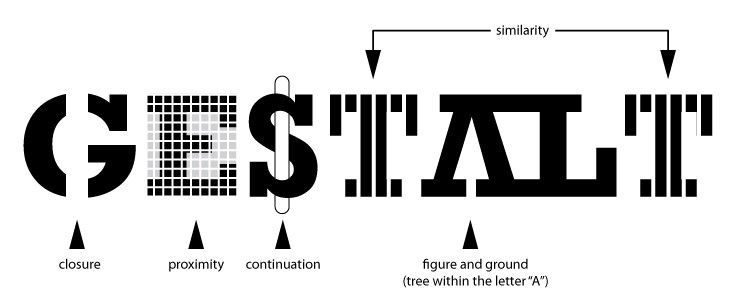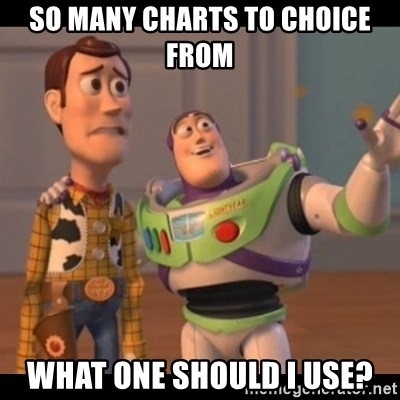
Gestalt Principles and Storytelling with Data

17 Data Visualization Charting Types You Should Reference
Audience Analysis — Why a General Audience Type Is Impossible to Create a Data Story For
According to the results of a study conducted by Stanford professor Chip Heath, 63 percent of people can remember stories. By contrast, only five percent (5%) can remember a single statistic. If you’ve ever wondered why data storytelling is so important, now you know.
When it comes to effective data storytelling, an essential component is analyzing your audience and know whom you’re trying to reach. Read on to learn more about the importance of audience analysis and find out why it’s impossible to create a data story for a general audience type.
Quick Reference:
- What Is Audience Analysis?
- What Is a Data Story?
- Why Can’t You Create Data Stories for a General Audience Type?
- Tips for Building Better Data Stories for Your Audience
- Conclusion – Define and Analyze Your Audience Today
What Is Audience Analysis?
What does it mean to analyze your audience? What kind of data should you be trying to gather to help you create impressive, impactful data stories?
Audience analysis, especially as it relates to data storytelling, involves careful research into various aspects of the people who are engaging with your content, buying your products or services, and making important decisions for your business. It looks at things like demographics (age, gender, etc.), location, interests, language, and preferences.
Once you’ve gathered data points that are relevant to your business and/or industry, the goal is to assess it to find useful and actionable insights. You can use the data to create data stories that are meaningful and find new ways to reach your customers, craft a persuasive message for industry leaders, and more.
What Is a Data Story?
Simply put, a data story involves translating data you’ve gathered from analyzing your audience into layman’s terms.
Value can’t be extracted from data until insights are translated in a way that people can understand and act upon. Dr. Hal R. Varian, Google’s Chief Economist, was spot on when, back in 2009, he predicted that being able to understand, process, extract value from, visualize, and communicate data would become an essential skill in the coming decades.

Data storytelling helps you (and your audience) to connect the dots between your analytics and put that information in context. When you’re able to interpret the data and create a story with it, you can better use it to influence your business decisions and actions (and influence others to take appropriate action as well).
Proper data storytelling involves many of the same elements as traditional storytelling. This includes using a “hook” to draw in your listener, focusing on certain themes, and ending with a conclusion or set of conclusions that wraps everything up nicely.
Data storytelling also utilizes visuals, such as charts, graphs, and infographics. The use of visuals helps to relay information and put it in a format that people can easily understand even if they do not have much (or any) experience interpreting data themselves.
Why Can’t You Create Data Stories for a General Audience Type?
When you’re creating data stories, you need to have a clear idea of who makes up your audience. It’s impossible to put together effective data stories for a general audience.
Remember, if you’re not specific enough in your data storytelling efforts, it’ll be hard for people to resonate with the information you’ve presented and feel interested in what you have to say. They’ll also be less likely to actually take the actions you want them to take since they won’t feel invested or see what’s in it for them.
Trying to create data stories for a general audience type will almost always backfire on you. In your efforts to appeal as many people as possible, you’ll likely end up finding that you’re not able to have an impact on anyone at all or make a strong enough point about the data you’ve collected.
Tips for Building Better Data Stories for Your Audience
Analyzing your audience and gathering data play key roles in creating better data stories. How do you use your existing data to build and package data stories that are meaningful, though?
Here are some best practices to follow that will help you make good use of the information you’ve collected through your audience analysis:
1. Review Your Data
Before you can create effective data stories, you first need to have a good understanding of the data you’ve gathered. It’s not enough just to have information available. You need to be able to assess that information and find a story within it that will resonate with your audience.
For many data owners, the challenge is not a lack of data, but rather an overabundance. With so many different places from which you can collect data , there’s no shortage of information out there.
Once you’ve gathered data points, you need to take time to filter through them and identify key insights. When you start sifting through the data you’ve gathered, you’ll notice that some points come up again and again or stick out more than others. Pay close attention to them.
2. Put Everything in Context
When it comes to good data storytelling, context matters. When it comes to putting your information in context, it helps to address the following:
- Who: Who is your audience? Who are you packaging your data story for?
- What: What matters to your audience? What do you want them to know after they’ve been presented with your data story?
- Where: In what setting will your audience receive this data story? How will they consume it? ‘
- How: How should the audience react based on the information provided?
Once you’ve evaluated your data and answered these questions, you’ll have an easier time figuring out the most appropriate way to package and present your information.
3. Write to Your Audience
Always refer back to your audience when you’re creating data stories. Think about their perceptions, preferences, and pain points. The more you do this, the easier it’ll be to ensure you’re telling a story that will resonate with them. Your audience should always play a key role in determining what you say and how you say it.
While you’re thinking about your audience, be sure to also think about their pre-attentive predilections, especially when creating visuals as part of your data stories. Remember, humans start making sense of things before they’re even aware of what they’re doing. You can leverage this fact when putting together visuals to trigger positive pre-attentive responses when you reveal certain trends and patterns.
Think about colors, shapes, sizes, patterns, and other elements that might trigger the right kind of response in your audience when you present them with your data. That way, you can make a good impression even when they’ve merely glanced at your visuals and haven’t had an opportunity to fully take them in. (Learn More Here: Gestalt Principles and Storytelling with Data)
4. Create Different Types of Visualizations
There are lots of different types of visualizations that you can create to display your data in a way that makes sense to your audience and makes a strong impression on them.
You might create a chart that’s more conceptual and exploratory, meant to facilitate discussion and get people talking. An example of this might be a metaphorical visual like a pyramid chart. On the other hand, you might decide that something data-driven and declarative (like a bar chart or scatter plot) is more appropriate for your audience.
Look at your data from several different directions to figure out which visualization is the best fit. Return back to the questions you asked yourself earlier (who, what, how), as well as your audience’s pre-attentive predilections, and think about what kind of visual will best align with that information.
5. Craft the Perfect “So What?” Sentence
When putting data together to create an effective data story, it’s important to craft a “so what?” statement that sums up your story for your audience. The sentence should include your point of view and clarification about what’s at stake (why your audience needs to care).
Once again, you can see why it’s so important to analyze your audience and know what they need. If you’re trying to create a data story for a general audience, you’re going to have a very hard time crafting a “so what?” sentence that resonates with them and impresses upon them the importance of the story you’re trying to tell.
6. Get Feedback
It’s always best to seek feedback on your data story before presenting it to your audience. When you take the time to ask for feedback, you have a chance to see if your ideal message is being put across before you package the data up and deliver it.
Try to get feedback from several different sources if possible, too. This helps you get a more well-rounded view and ensure that your data storytelling will yield the intended result.
Conclusion – Define and Analyze Your Audience Today
Audience analysis and data literacy are crucial to your business’s long-term success. If you don’t have a clear understanding of you’re audience and whom you’re addressing with your data stories, it’ll be very difficult for you to create stories that resonate with them and inspire them to take a specific action.
Be sure to keep this information on audience analysis, audience development, and data storytelling in mind moving forward. Check out some of my other posts as well if you want to learn more about these practices and how you can use them to further improve the impact of your data story.
Featured Image source: EcommerceMag.FR





